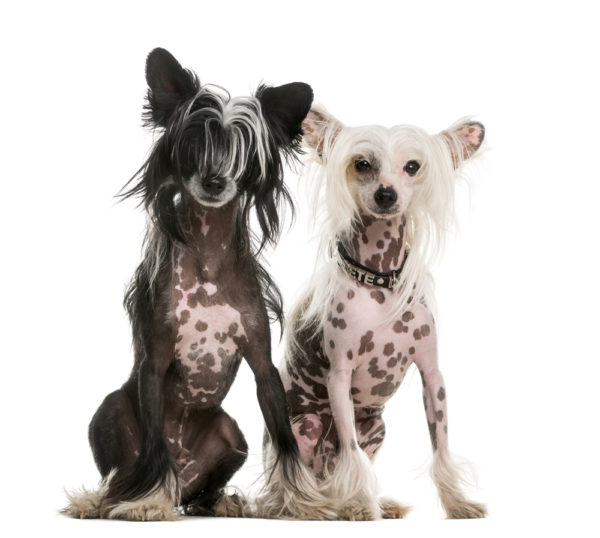
Today is “Be Bald and Be Free Day,” and we take this opportunity to celebrate our “naked” breeds. Some of them you know: The Xoloitzcuintli, the Peruvian Inca Orchid, the American Hairless Terrier, the Chinese Crested Hairless, and the Argentine Pila Dog. What’s interesting about them is what they have in common: Most are quite old and date back thousands of years. These breeds were considered to be ‘magical’ and possess special healing powers, probably because their hairless bodies give off a comforting heat that made aches and pains feel better.
Selective breeding had a role in these dogs, but Mother Nature started it with a gene mutation. In a study published in Science, researchers found an insertion of seven letters, or base pairs, of genetic code in a gene called FOXI3 in all the hairless dogs. Although the exact function of the FOXI3 gene is unknown, other genes in the FOX family control embryonic development in mammals. When the researchers investigated the equivalent gene in mice, they traced its activity to developing teeth and fur cells which fits neatly with observations of hairless dogs who often have fewer teeth than typical dogs.
The Xolo, Inca Orchid and Chinese Crested all have dominant hairlessness, and this means each needs only one copy of the gene to be hairless. And then there’s the American Hairless Terrier. The “new kid on the block” originated in Louisiana when a hairless pup was produced by two ‘coated’ Rat Terriers during the 1970’s. Development of the new breed was taken seriously, and in 2017, it became the most recent of the hairless dog breeds to be accepted into the AKC. The AHT is highly unusual because it is the only known example of recessive hairlessness in dogs. This means a dog has to have two copies of the gene to be to express it.
Today, let’s revel in the nakedness of these fabulous dogs by having our readers who own a hairless breed share pictures of their “nekkid” dogs!
Image: A pair of Chinese Crested Hairless/Deposit
